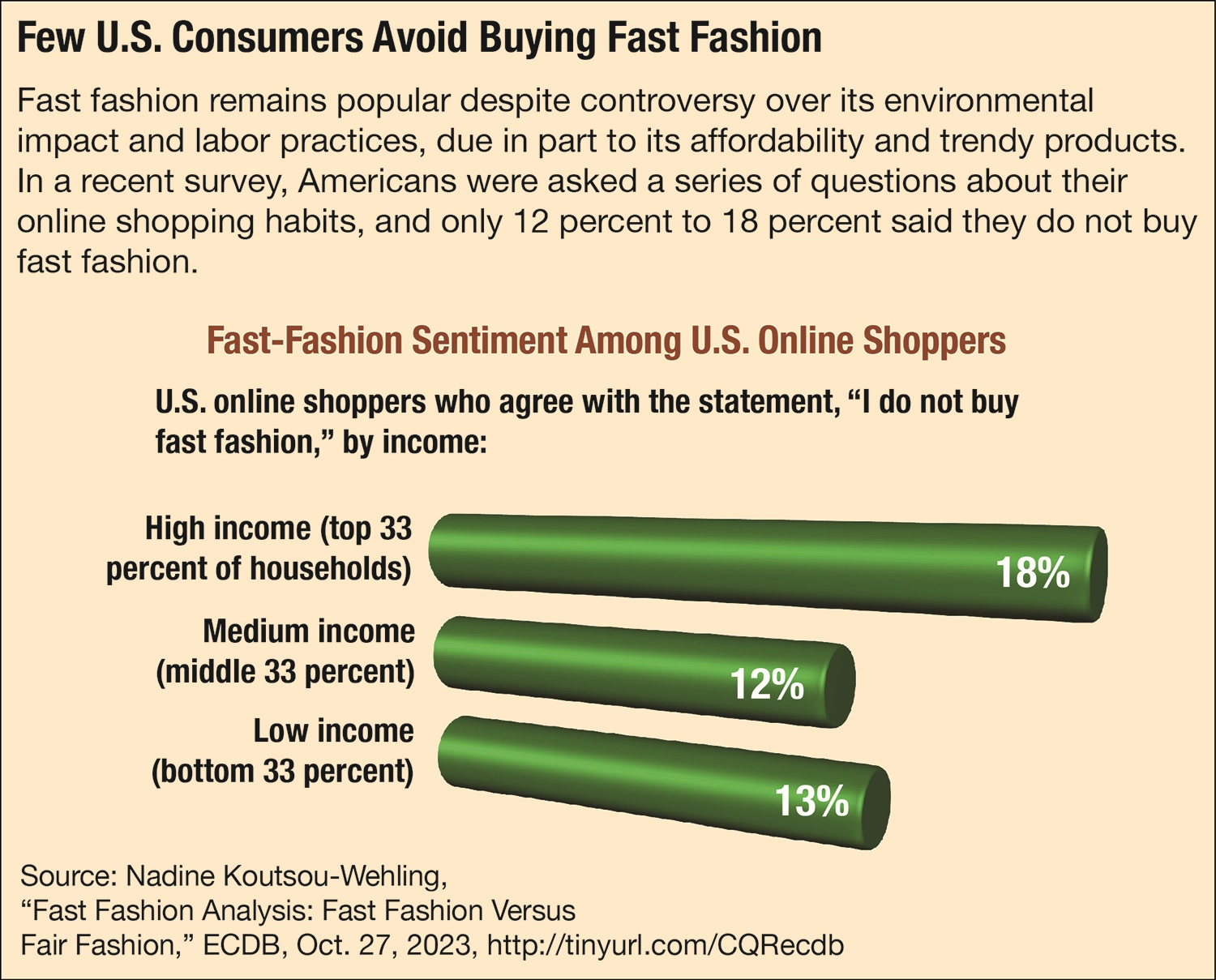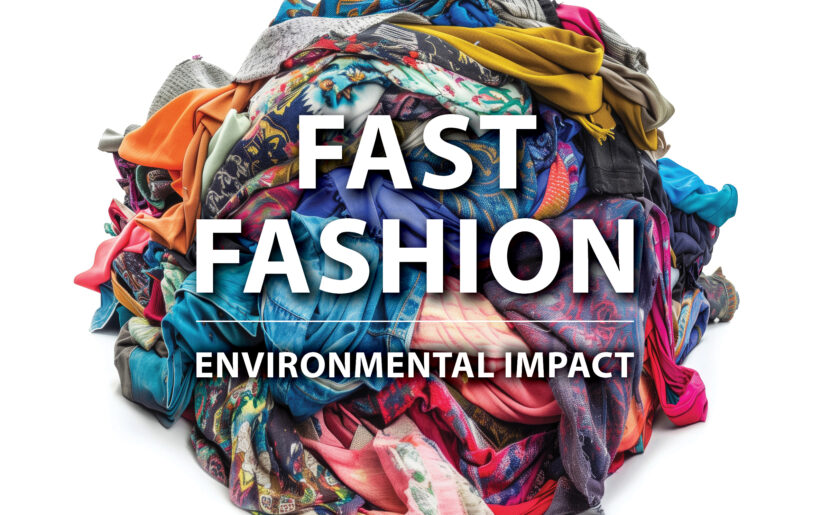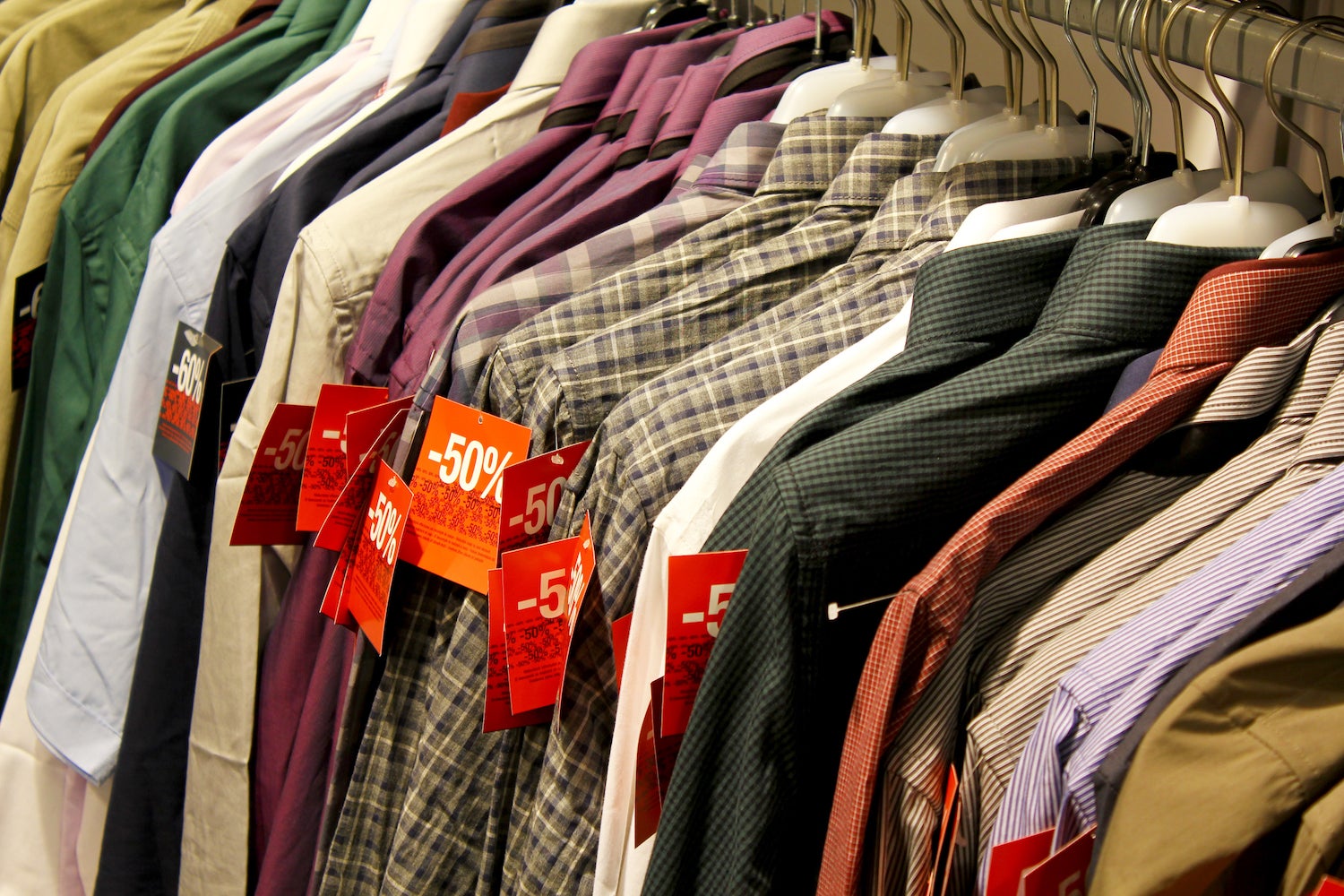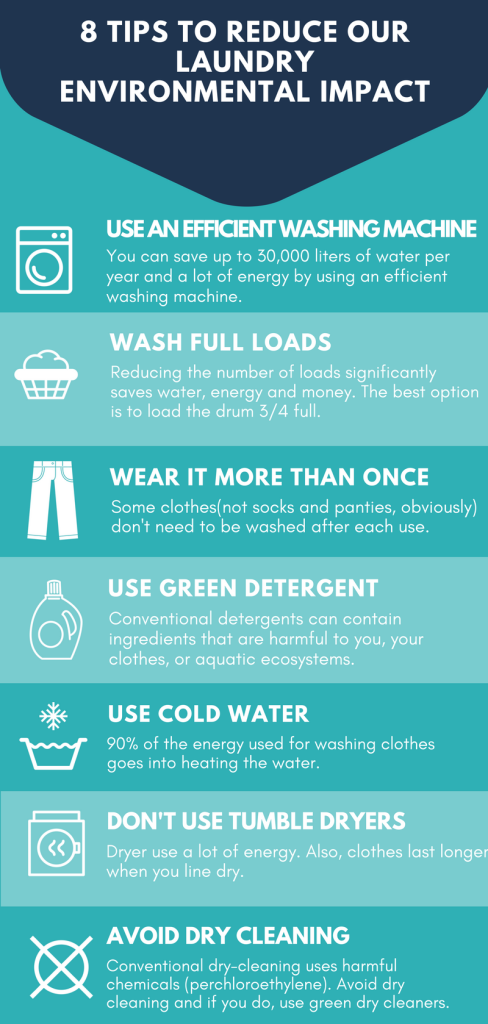Imagine opening your closet to find it overflowing with trendy outfits, each bought at a bargain price. Fast fashion makes this possible, offering the latest styles at rock-bottom prices.
But have you ever paused to consider the true cost of these cheap clothes? The impact of fast fashion goes beyond your wallet, affecting the environment, workers, and even your well-being. By reading this article, you’ll uncover the hidden truths behind your wardrobe choices.
You’ll learn how fast fashion impacts the world around you and, more importantly, discover simple steps to minimize your role in this global issue. Understanding this can empower you to make smarter, more ethical fashion choices that align with your values. Ready to transform your wardrobe and make a difference? Let’s dive in.
Fast Fashion Phenomenon
Fast fashion brings rapid clothing trends to the market. Affordable prices make it tempting. Many people buy more clothes than needed. This leads to waste and environmental harm.
Fast fashion brands produce clothes quickly. They often copy designs from high-end brands. This cycle creates a demand for new clothes regularly.
What Defines Fast Fashion?
Fast fashion focuses on speed and low cost. Brands release new collections every few weeks. Trends change quickly, pushing consumers to buy more. Production methods prioritize quantity over quality.
Environmental Impact
Fast fashion contributes to pollution. Factories release harmful chemicals into rivers. Textile waste ends up in landfills. These practices damage ecosystems and wildlife.
Social Impact
Workers in fast fashion factories often face poor conditions. Many earn very low wages. Long hours and unsafe environments are common. This raises ethical concerns about the industry.
Economic Influence
Fast fashion affects local economies. It drives small businesses out of the market. Consumers prefer cheaper, trendy options. This makes it hard for sustainable brands to compete.
Environmental Consequences
The impact of fast fashion on the environment is nothing short of alarming. As you browse through trendy collections at bargain prices, the hidden cost to our planet is mounting. Understanding the environmental consequences of fast fashion can help you make more informed choices and contribute to a healthier planet.
Pollution And Waste
Fast fashion generates an enormous amount of pollution. Factories release toxic chemicals into waterways during the dyeing process, harming aquatic life and contaminating local water supplies. Have you ever thought about where your old clothes end up? Many of them are dumped into landfills, where they decompose slowly, releasing harmful gases into the atmosphere.
Consider the sheer volume of clothing produced each year. Brands churn out new collections weekly, leading to overproduction. This not only contributes to waste but also creates a culture of disposability. Next time you shop, ask yourself: Do I really need this, or is it just going to end up as waste?
Resource Depletion
The fast fashion industry is a significant drain on natural resources. It takes about 2,700 liters of water to produce a single cotton T-shirt. That’s enough water for one person to drink for two and a half years! Reducing your consumption of fast fashion can significantly lessen this strain on our planet’s resources.
Moreover, the industry heavily relies on synthetic fibers like polyester, which are derived from fossil fuels. These fibers do not biodegrade, persisting in the environment for hundreds of years. By choosing garments made from sustainable materials, you help conserve these precious resources and reduce environmental impact.
Taking steps to combat the environmental consequences of fast fashion isn’t as daunting as it seems. You can start by investing in quality over quantity, supporting ethical brands, and recycling or donating old clothes. What changes will you make today to help protect our planet?
Social Implications
Fast fashion leads to massive waste and poor labor conditions. Buying quality clothes and supporting ethical brands helps. Choose timeless styles and shop secondhand to make a difference.
The fast fashion industry has woven itself into the fabric of modern society, offering trendy clothing at low prices. However, the rapid churn of fashion has significant social implications that often go unnoticed. From labor exploitation to community displacement, the impacts are far-reaching and demand our attention.Labor Exploitation
Fast fashion relies heavily on low-cost labor, often at the expense of workers’ rights and well-being. Many garments are produced in countries where labor laws are weak or poorly enforced. Workers, including women and children, face long hours, unsafe conditions, and meager wages. A significant portion of these workers are often subjected to verbal and physical abuse. They lack the power to demand fair treatment due to the absence of unions or supportive regulations. Have you ever considered who made the clothes you wear each day? By opting for ethical brands, you can help ensure fair labor practices.Community Displacement
Fast fashion also contributes to community displacement, as large factories often pop up in previously residential areas. These factories can take over land that was once used for agriculture or community spaces, disrupting local economies and lifestyles. The influx of industrial work can lead to an increase in pollution and a decrease in quality of life for those living nearby. As someone who values their community, think about how your fashion choices impact others. Supporting local artisans or sustainable brands can help maintain the integrity of these communities. By understanding the social implications of fast fashion, you can make more informed choices. What steps will you take to ensure that your fashion habits positively impact the world?
Credit: cqpress.sagepub.com
Economic Effects
The economic effects of fast fashion are vast and multifaceted. This industry thrives on the rapid turnover of trends, leading to both positive and negative outcomes. While it offers affordable clothing to consumers, its long-term impacts on economies are worth scrutinizing.
Market Saturation
Fast fashion brands flood the market with endless options. This constant influx leads to market saturation, where supply outweighs demand. You might notice that stores are always filled with new collections, often resulting in unsold inventory.
Have you ever wondered why sales seem almost perpetual at your favorite clothing store? This is a direct consequence of market saturation. Brands need to clear their stock to make room for new designs. It creates a cycle of waste and excess.
Consider the impact on the brands themselves. While they might enjoy short-term profits, long-term sustainability becomes questionable. The pressure to continuously innovate and sell can lead to financial instability.
Impact On Local Economies
Fast fashion can undermine local economies. Small businesses struggle to compete against low-priced, mass-produced items. This can lead to closures and loss of local culture and craftsmanship.
Think about your neighborhood boutique that offers unique, handmade clothing. Such stores often cannot match the prices of fast fashion giants. As a result, they may lose customers who prioritize cost over quality.
Moreover, the outsourcing of production to countries with cheaper labor can drain economic opportunities from local communities. This results in job losses and economic decline in areas where manufacturing was once a key industry.
What can you do to support local economies? Consider buying from local artisans and smaller brands. Each purchase is a vote for sustainable practices and economic diversity.
Reflect on your own shopping habits. Are you contributing to a more sustainable economy? Your choices can make a significant difference in shaping the future of fashion. Is fast fashion worth the cost to local communities?
Personal Health Risks
Fast fashion impacts personal health through exposure to toxic chemicals and stress. Opt for sustainable brands to reduce risks. Choose quality clothing to avoid harmful substances and promote well-being.
The impact of fast fashion extends beyond environmental and social issues, reaching into the realm of personal health risks. As consumers, you might not realize how these risks can affect your daily life. Fast fashion’s aggressive production methods and use of harmful chemicals can pose serious threats to your well-being. Let’s look closer at these health risks and how you can protect yourself.Chemical Exposure
Clothing from fast fashion brands often contains toxic chemicals. These chemicals, such as azo dyes and formaldehyde, are used to dye fabrics and prevent mold during shipping. Wearing these clothes daily can lead to skin irritations and allergies. Have you ever felt itchy or noticed a rash after wearing a new shirt? This could be due to chemical residues left on the fabric. Washing new clothes before wearing them can help reduce this risk. However, not all chemicals can be washed away. Think about choosing brands that prioritize non-toxic materials. Opt for organic cotton or garments labeled as free from harmful chemicals. Your skin will thank you for making this healthier choice.Psychological Impacts
Fast fashion not only affects your physical health but also your mental well-being. The constant push for new trends can lead to stress and anxiety. You may feel pressure to keep up with the latest styles, impacting your self-esteem and happiness. Have you ever felt overwhelmed looking at your overflowing closet, yet still felt like you have nothing to wear? This is a common experience driven by fast fashion’s rapid cycle. Instead of buying new clothes frequently, try developing a personal style with timeless pieces that boost your confidence. Consider how your purchasing habits affect your mental state. Are you buying clothes to fill an emotional void? Reflecting on these questions can help you make more mindful choices. Your peace of mind is worth more than any trend. By being more conscious of these personal health risks, you can protect yourself from the negative effects of fast fashion. Making small changes in your buying habits can lead to a healthier and more sustainable lifestyle.
Credit: www.bvmsisters.org
Sustainable Alternatives
Fast fashion harms the planet by using cheap materials and producing waste. Choose quality clothes that last longer. Shop second-hand or swap with friends to reduce clothing waste.
In the whirlwind of modern consumerism, fast fashion has emerged as a formidable force, offering trendy clothing at breakneck speed. Yet, this convenience comes at a significant environmental and ethical cost. As awareness grows, many are seeking sustainable alternatives to minimize their footprint. You might wonder, how can you make a difference without sacrificing style or breaking the bank? The answer lies in exploring ethical brands and embracing second-hand shopping.Ethical Brands
Ethical brands offer a refreshing change. They prioritize fair wages, safe working conditions, and environmentally friendly materials. When you choose these brands, you support companies that care about people and the planet. Brands like Patagonia and Everlane are leading the charge. They are transparent about their production processes and materials. You can feel good knowing your purchase helps drive positive change. Think about this: every dollar you spend is a vote for the kind of world you want. By choosing ethical brands, you vote for better business practices. Aren’t you excited by the idea that your wardrobe can reflect your values?Second-hand Shopping
Second-hand shopping is another sustainable alternative. It’s not just an opportunity to find unique pieces; it’s a powerful way to reduce waste. When you buy second-hand, you give clothes a new life and keep them out of landfills. Thrift stores and online platforms like ThredUp and Depop offer a treasure trove of styles. You might find that vintage jacket you’ve always wanted or a designer dress at a fraction of the price. Have you ever experienced the thrill of finding a hidden gem while thrifting? It’s like a treasure hunt, where every find tells a story. Plus, it’s a win-win for your wallet and the environment.Sustainable alternatives are more accessible than ever, offering you choices that align with your values. By supporting ethical brands and exploring second-hand shopping, you can make a tangible impact. What small changes can you make today to contribute to a more sustainable future?
Consumer Awareness
Consumer awareness is vital in combating the harmful effects of fast fashion. Many people buy clothes without knowing the impact on the environment. Understanding these effects can help reduce waste and promote sustainable choices.
Education And Advocacy
Education plays a key role in creating awareness about fast fashion. Schools and communities should talk about the impacts on the planet. People should learn about how clothes are made and their journey to stores.
Advocacy groups can help spread the word. They can organize events and campaigns to highlight sustainable fashion. More people should join these groups to promote change. Sharing information on social media can also raise awareness.
Responsible Purchasing
Make informed decisions when buying clothes. Choose quality over quantity to reduce waste. Look for brands that use sustainable materials and ethical practices.
Second-hand shopping is another great option. Thrift stores offer unique finds and help reduce fashion waste. Repairing and reusing clothes extends their life and saves money.
Think about the long-term impact of your purchases. This can lead to more sustainable habits. Being mindful of what you buy can make a big difference.

Credit: one5c.com
Thriving Beyond Fast Fashion
Fast fashion harms the environment and exploits workers. Choose sustainable brands and buy quality clothes that last longer. Consider thrift shopping and recycling old garments to reduce waste and support ethical practices.
Fast fashion has reshaped the way we think about clothing, offering trendy items at lightning speed and low prices. However, this convenience comes at a significant cost to both the environment and workers’ rights. If you’ve ever felt overwhelmed by a closet full of clothes yet still find yourself shopping for more, it’s time to consider how you can thrive beyond fast fashion. Embracing sustainable fashion practices not only benefits the planet but also helps you cultivate a more personal and meaningful relationship with your wardrobe.Building A Capsule Wardrobe
Creating a capsule wardrobe is a powerful way to step away from the fast fashion trap. It involves selecting a limited number of versatile, high-quality pieces that you love wearing. Imagine opening your closet and feeling excited about every item you see. Start by identifying your style essentials. These are the pieces you reach for time and again. Think of classic jeans, a crisp white shirt, or a little black dress. Next, focus on quality over quantity. Investing in durable clothing may cost more initially, but it pays off in the long run. High-quality items withstand wear and tear, reducing the need for frequent replacements. Remember, it’s about choosing pieces that mix and match seamlessly. Consider your lifestyle and pick items that suit various occasions. This method not only saves time but also reduces decision fatigue.Promoting Circular Fashion
Circular fashion is about extending the lifecycle of garments, ensuring they don’t end up in landfills prematurely. Have you ever thought about what happens to your clothes once you no longer want them? Start by selling or donating items you no longer wear. Platforms like Poshmark or local thrift stores are great places to give clothes a second life. You might be surprised at how fulfilling it is to see someone else enjoy something you once loved. Repairing and upcycling clothes is another creative approach. Turn worn-out jeans into shorts or add patches to a jacket for a fresh look. This keeps garments in use and reduces waste. Consider swapping clothes with friends or organizing a community swap event. It’s a fun way to refresh your wardrobe without spending a dime. Plus, you’ll foster a sense of community and shared responsibility. Moving away from fast fashion doesn’t mean sacrificing style. It’s about making conscious choices that reflect your values and protect the environment. Are you ready to make a change? By building a capsule wardrobe and promoting circular fashion, you’re taking meaningful steps towards a more sustainable future.Frequently Asked Questions
What Is Fast Fashion?
Fast fashion is a business model that replicates runway trends quickly and affordably. It leads to mass production of low-cost clothing, often at the expense of quality and ethics. This approach encourages frequent purchases, contributing significantly to environmental degradation and unethical labor practices.
How Does Fast Fashion Harm The Environment?
Fast fashion harms the environment through excessive waste, pollution, and resource depletion. It promotes disposable clothing, leading to massive textile waste. The industry heavily relies on water and chemicals, polluting water bodies. Additionally, high carbon emissions from production and transportation worsen climate change.
Why Is Fast Fashion Unsustainable?
Fast fashion is unsustainable due to its exploitative resource usage and waste generation. It prioritizes speed and low cost over quality and environmental considerations. This leads to overconsumption and excessive waste, straining natural resources and contributing to environmental degradation.
How Can I Avoid Fast Fashion?
Avoid fast fashion by choosing sustainable brands and quality over quantity. Support ethical brands that prioritize fair wages and eco-friendly materials. Buy second-hand or vintage clothing and focus on timeless pieces. Educate yourself about the impact of your purchasing decisions and recycle whenever possible.
Conclusion
Fast fashion harms our planet. We must change our shopping habits. Choose quality over quantity. Support brands that care about sustainability. Educate yourself on ethical fashion. Share knowledge with friends. Little changes make a big difference. Slow fashion is about thoughtful choices.
Buy less, but buy better. Prioritize long-lasting items. Help reduce waste and pollution. Our actions impact future generations. Be part of the solution, not the problem. Together, we can make fashion more sustainable. Start today for a better tomorrow.

